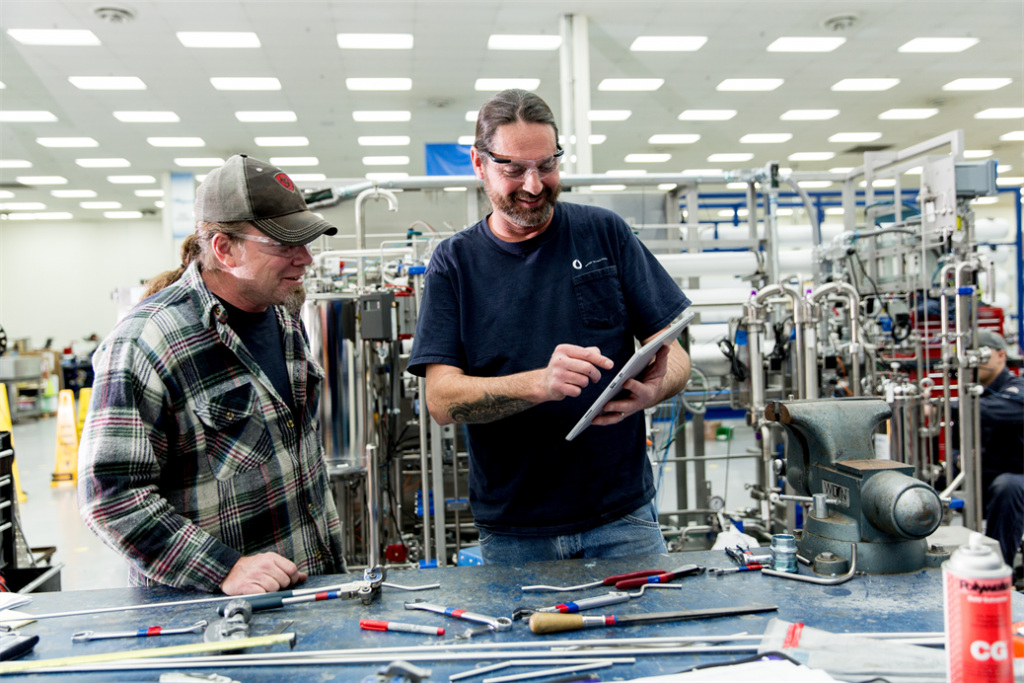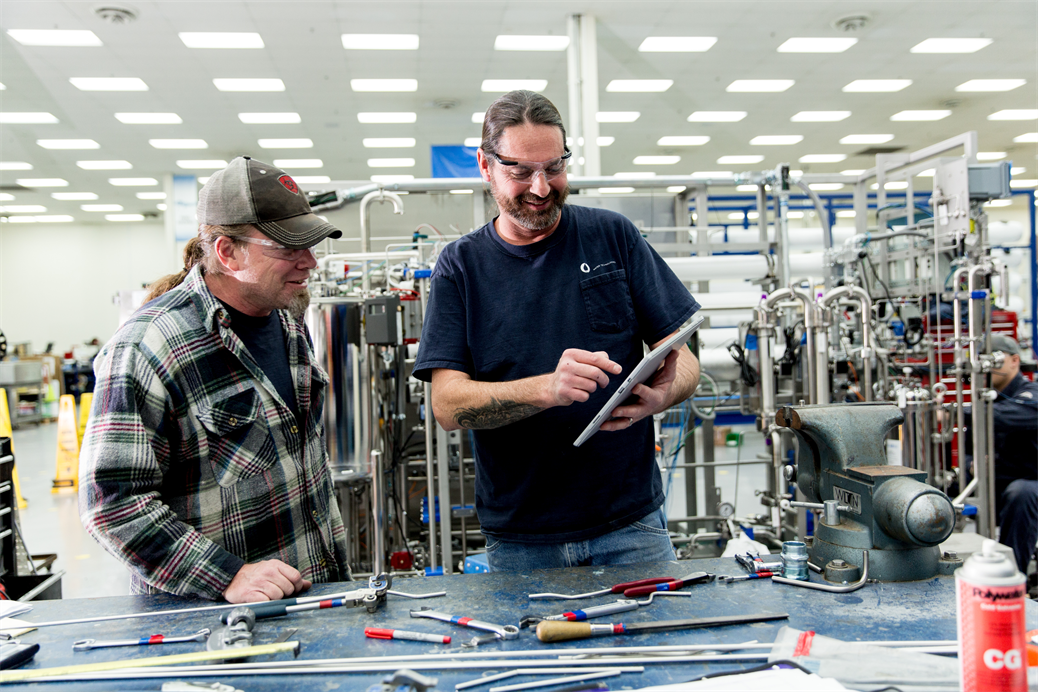
IT+OT=IoT for manufacturers
Shifts in customer expectations have changed manufacturing forever. Modern manufacturing requires intelligent operations and connected supply chains to deliver more agile production, greater transparency, and smarter products and services.
The Internet of Things (IoT) sits at the center of this transformation. Today, IoT is not just about connecting devices—manufacturers have been doing that sort of thing for a long time—instead, it is about enabling a Digital Feedback Loop where data can be synchronized between employees, operations, products, and customers. Data from customers informs product development; operations data informs staffing decisions; product sales data informs production. As more data is input into the system, the system becomes more intelligent, making manufacturing smarter, safer, faster, and more agile, all while improving products and customer experience.
[msce_cta layout=”image_center” align=”center” linktype=”blue” linkurl=”http://aka.ms/2019-manufacturing-trends” linkscreenreadertext=”Download our 2019 Manufacturing Trends Report” linktext=”Download our 2019 Manufacturing Trends Report” ][/msce_cta]
The expansion of IoT
The expansion of the Internet of Things (IoT) has opened the door for a new breed of intelligent manufacturing technology that is breaking down silos across the organization, from marketing and sales to design, service, and production.
As IoT expands, it is helping manufacturers improve operations. Today, data-optimized smart machines can receive input from a wide range of sources, from customer order data to production data, to enable manufacturing that is more flexible, improve production efficiency, and provide greater visibility into operational performance.
Through the unification of data, business leaders can get access to live dashboards that provide visibility across all parts of the organization. Connected systems can communicate to detect unbalanced load flows and automatically make corrections to prevent outages. Intelligent machines can identify faulty parts and select new assets to restore production. And with integrated controls, production management systems, and supply chain management systems that are integrated with other IT systems, manufacturers are able to intelligently route orders and automate work streams.
IoT is making products smarter. Through connected sensors, products can now send data to the cloud, where it can be processed and used to optimize product performance and take more informed action. The aggregated product usage data also provides businesses with a trove of information about their customers and products, which, in turn, can be used to help develop better products, services, and offerings.
Lastly, IoT is unlocking new opportunities. As internet-connected devices bring manufacturers closer to the end user, it is enabling new and innovative ways for manufacturers to support their customers. This includes Product as a Service, where physical products, software, and support are delivered as a service, and digital services, such as predictive maintenance, which augment other manufacturing and product services.
Case study
Many of our clients are transforming their businesses through IoT. One such company, manufacturer Sandvik Coromant, develop its service model with a predictive analytics solution that ties all of the elements of its supply chain and fabrication process together.
Using IoT tools built into Azure, they collect, compute and analyze data from sensors embedded in the tools across the shop floor. This enables them to monitor every aspect of their performance and identify any bottlenecks in the overall supply chain or manufacturing. Using intelligent tools, Sandvik Coromant takes that analysis and makes recommendations on how to optimize the manufacturing process, creating a predictive maintenance schedule that’s designed to help avoid unscheduled shutdowns. The solution combines data from the CRM system with data from the shop floor and machining systems, then makes this information available to Sandvik Coromant so they can provide feedback to customers and support in predicting when to change or order a tool.
With this technology, Sandvik Coromant has unlocked services that help customers make more informed decisions and more easily calculate the financial return on a new machining tool, translating to additional revenue, happier customers, and greater flexibility in how its technical experts connect with customers.
Why Microsoft?
Manufacturing today is markedly different from even five years ago, largely because of IoT. This means that manufacturers who are still running on legacy technology are at a disadvantage, as these platforms of the past were not designed for IoT and the cloud. Manufacturers looking to develop new, smart products and accelerate the speed of doing business need modern technology that enables them to do so today, while also providing them with the power and scale to innovate and grow in the future. Microsoft is uniquely positioned to provide manufacturers with the technology and resources to support this vision.
We’re making it easier for manufacturers to securely integrate IT with OT using tools such as Azure IoT Connected Factory for connecting machines in your own factories using OPC UA or Dynamics 365 Connected Field Service for connecting machines at your customer facilities into your business systems. And for those smaller manufacturers who want a fully managed service for IoT, we’ve introduced IoT Central, which makes it easy to connect, monitor, and manage your IoT assets at scale.
These tools are making it easier to provision and manage devices at scale, for businesses of all sizes, and with Azure IoT Security Center, we’re helping customers keep their data secure. Perhaps this is why Microsoft Azure is the only hyperscale cloud provided in the leader category of Forrester’s Industrial IoT Software Platforms Wave.
Business impact of IoT
IoT is growing rapidly and impacting nearly every industry on the planet. By next year, IDC projects there will be 20 billion connected “things,” with the global IoT market predicted to reach $457 billion (Gartner). And it’s just getting started; by 2025, IDC predicts there will be 80 billion connected devices, creating roughly 180 zettabytes of data. The impact of IoT, both in manufacturing operations and in product development, will continue to grow with compounding interest.
At Microsoft, we’re working hard to help our customers benefit from IoT. Our ecosystem of products and services gives manufacturers the tools they need to modernize and innovate, and we’re continuing to invest in new IoT solutions: over the next four years, we’re investing over $5 billion in IoT, including investments in R&D, partner programs, and ecosystem programs.
Wherever you are on your IoT journey, Microsoft and Dynamics 365 for Finance and Operations give you the tools you need to start taking advantage of the many benefits of IoT. To learn more about IoT and the other trends shaping the future of manufacturing, download our 2019 Manufacturing Trends report.





